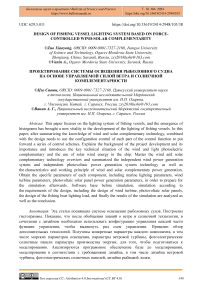Design of fishing vessel lighting system based on force-controlled wind-solar complementarity
Автор: Zuo X., Vanin A.
Журнал: Бюллетень науки и практики @bulletennauki
Рубрика: Технические науки
Статья в выпуске: 6 т.10, 2024 года.
Бесплатный доступ
This paper focuses on the lighting system of fishing vessels, and the emergence of histograms has brought a new vitality to the development of the lighting of fishing vessels. In this paper, after summarizing the knowledge of wind and solar complementary technology, combined with the design needs to use the configuration control of each part of the control function to put forward a series of control schemes. Explains the background of the project development and its importance and introduces the key technical situation of the wind and light photoelectric complementary and the use of solar wind energy in the ship. Master the wind and solar complementary technology overview and summarized the independent wind power generation system and independent photovoltaic power generation system technology as well as the characteristics and working principle of wind and solar complementary power generation. Obtain the specific parameters of each component, including marine lighting parameters, wind turbine parameters, photovoltaic solar panel power generation parameters, in order to prepare for the simulation afterwards. Software base before simulation, simulation according to the requirements of the design, including the design of wind turbine, photovoltaic solar panels, the design of the fishing boat lighting load, and finally the results of the simulation are analyzed as well as the conclusion.
Wind-solar hybrid, ship lighting, force control configuration
Короткий адрес: https://sciup.org/14130491
IDR: 14130491 | УДК: 629.5.011 | DOI: 10.33619/2414-2948/103/38
Текст научной статьи Design of fishing vessel lighting system based on force-controlled wind-solar complementarity
Бюллетень науки и практики / Bulletin of Science and Practice
UDC 629.5.011
At present, research on new energy sources is being carried out all over the world, with wind power and solar energy being the most widely researched. Developed countries such as the United States are also looking to wind and solar power as the main sources of renewable energy for future power generation. Today, computing technology is advancing rapidly, while new technologies for generating electricity from wind and solar power are also booming every year. Over the past two decades, wind power will be able to support 10 per cent of all countries' electricity needs [1]. Globally, and even within the Danish government, it has been predicted that by 2030 wind power will grow to 50 per cent of Denmark's total electricity generation [2]. Wind and solar are two of the fast-growing renewable sources of energy in the world today and have become one of the most important sources of electricity generation [3].
As an emerging wind-solar complementary ship lighting system in the field of new energy applications, it reduces the dependence on the existing power supply through the use of renewable energy, is green and non-polluting, and has been actively researched and developed for promotion in China [4]. Abroad: in the field of wind and solar complementary power generation, as early as the early 1980s, a large number of experts carried out in-depth research [5], Denmark's N. E. Busch and KlleNbach first more comprehensively given the integrated use of wind power and solar program; the former Soviet Union countries of the N. Aksarin used a probabilistic calculation of the way, predicted the future development trend of wind and solar energy use; Roy Billinton et al. of Canada pointed out the feasibility of the expansion of small-scale wind and solar complementary power generation system. Domestic [6]: Most of them are located in areas rich in natural resources, such as Inner Mongolia, Xinjiang, and Tibet, and are usually researched by national research institutes and institutions of higher learning [7]. In 2004, Huaneng Nanao Company connected the wind-solar complementary power generation to the grid, completing the first truly commercialized wind-solar complementary power generation system in China [8]. Chinese scholars have made a lot of research results in the construction of wind-solar hybrid control system, especially in the MPPT control decision and yaw management of wind-solar hybrid power generation control system [9]. Taking the solar power generation system as an example, an improved perturbation observation method is proposed, which misjudges the existing perturbation observation method when the light varies unevenly, and the effectiveness of the method is proved by simulation and the accuracy is improved. The application of wind and solar complementary power generation technology on ships has long been proposed abroad [10]. At present, new energy is mainly used in yachts, cruise ships, fishing boats and other small ships. The main functions are: firstly, as the main power source of the ship and other power sources together or separately to provide energy for ship navigation, and secondly, as the auxiliary energy source of the ship to provide energy for lighting and navigation [11]. In 1980, a Japanese company produced the world's first solar-powered ship capable of sailing on a sunny day, generating 7 kW/hour of electricity per day. two Swiss-made solar-powered ships were operationally launched in the late 1990s. One was a 14 square metre solar module on the roof of the ship to provide kinetic energy for the ship's operation, converting a new type of non-polluting solar energy into kinetic energy [12]. In November 2000, the first test of the wind-solar-powered passenger ship SOLAR.SAILOR was a success [13]. The ship has three basic power modes: solar mode, wind mode and synergy mode. The ship has eight adjustable wing sails that can quickly adapt to the wind direction and adjust to the position of the sun, making it a system ship capable of obtaining sunlight and wind energy synchronously or independently [14]. The vessel is economical, environmentally friendly, durable and achieves zero external emissions. ‘Solar. SOLARSAILOR On 8 May 2007, the ‘Sun 21’, consisting of a solar module, batteries and electric motors, completed its transatlantic journey in 63 days [15]. The ‘Sun 21’ has a solar panel surface with a length of 14m, a width of 6m and an area of 60m2. In December 2007, the cargo ship ‘Beluga Sky Sail’ was the first wind-assisted power ship to cross the Atlantic Ocean for four months, with controllers controlling the kite's flight path to ensure maximum propulsion for the kite.
The off-grid type is mainly used in small and medium sized homes with normal power supply. And the generator, controller and battery are the main parts of this type of power generation equipment. Its working mechanism is shown in Figure 1
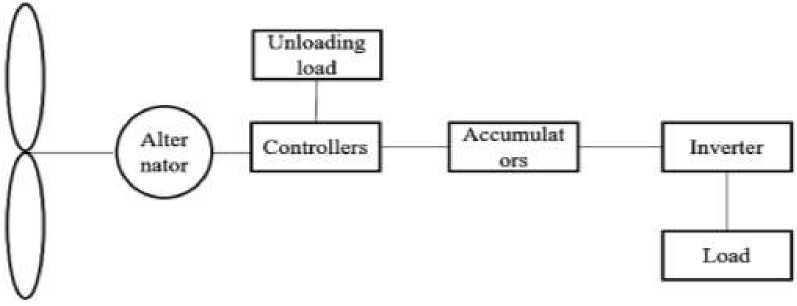
Figure 1. Off-grid wind power systems
Wind power is based on the principle of converting wind energy into electricity. Wind power relies primarily on air currents to power the rotation of the fan blades. If the rotation of the fan blades generates a current in the coil, this power causes the coil to disrupt the magnetic inductance. The current is then integrated by the control unit and fed into the battery. In the process of generating power, the rated current is very unstable, so it first stores all the energy in the battery and then converts the DC current in the battery to AC current using a converter. And once there is a sudden over-voltage due to a large change in wind speed, the control circuit promptly disconnects the generator line, leaving only the distribution line. This will be able to achieve the effect of protecting the lines. For grid-connected generators, they are applied in large power systems. Figure 2 shows a basic model of a grid-connected power generation system. By converting the output power of the generator into electrical energy, current is supplied to the grid through the control unit. When the power production is high, excess power is sent to the grid. When the power production is low, the grid provides power to the consumers.
Бюллетень науки и практики / Bulletin of Science and Practice Т. 10. №6. 2024
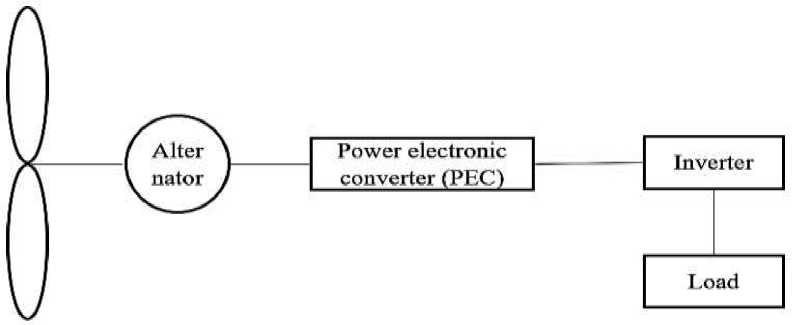
Figure 2. Grid-connected wind power system
The two main types of wind energy engines are variable pitch variable speed and fixed pitch fixed speed, and the three main types of motors include: doubly-fed asynchronous generators, synchronous generators with permanent magnet materials, and cage-type asynchronous generators. The first two are preferred by scientists and are the main objects of research in today's scientific community. The basic principle of the permanent magnet direct drive synchronous generator is to attach the blades of the wind turbine directly to the rotating shaft so that as the direction of the wind changes, the direction of the voltage that the engine needs to produce will change accordingly. The advantage of this design is that the total power in the mechanical transmission process can be reduced, thus growing the life of the main engine. Moreover, due to the simple structure, the whole machine works with less noise, so the power generation efficiency is also higher. Permanent magnet generators are smaller in size and made of thin and light materials, so they can be used to adapt to industrial systems with strict working time conditions. Mechanically, the blades of the permanent magnet material direct-drive synchronous wind turbine can be used for both high-intensity work and harsh working conditions. The engine's magnetic force is also very strong and does not easily disappear even after long periods of operation. Wear-resistant and high-temperature-resistant metal materials are also used on the rotor arm. It can operate stably under long-term working conditions. Damage can be reduced by the unique manufacturing process of the generator. It can work for more than 30,000 hours under high load conditions. When the blades are stationary, the angle of the blade shaft is easy to move with the wind, which has the advantage of easy starting. As the wind speed increases, the blades work gradually and smoothly, preventing the blades from falling off due to high wind. When the wind speed reaches a certain level, the rotation of the wind turbine will no longer vibrate.
Stand-alone photovoltaic power generation systems can be subdivided into two categories: stand-alone photovoltaic power generation systems and grid-connected power generation types. The basic operating mechanism of a stand-alone PV system is shown in Figure 3. The principle structure is the use of solar cells and charge management, which consists of an inverter, a solar fuel cell and a controller. The basic principle of the solar power system design is to use solar panels to absorb sunlight and then use the solar effect to convert the sunlight into DC power, which is supplied to the battery using a charge control valve. The power generation system is capable of maintaining a low input while maintaining high stability.
A solar cell has a surface mounted by a metal film resistor, which is used in conjunction with the metal film resistor to generate current under sunlight conditions, using the photoelectric effect. In the next section, we will show how it works by examining a PN junction.
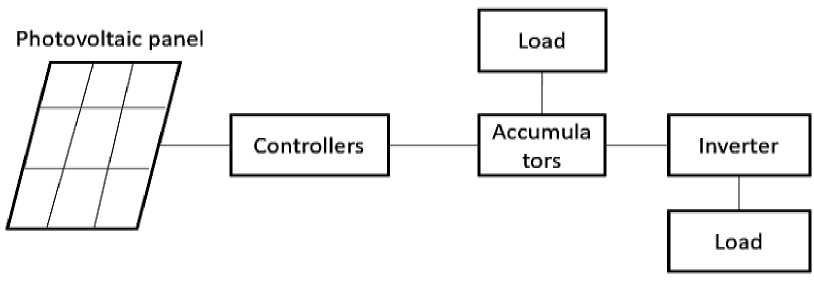
Figure 3. Off-grid photovoltaic power generation system
When N-type silicon and P-type tubes are bonded to each other, a positive charge from the N-type region is propagated to the P-type region, and a hole from the P-type region is propagated to the N-type region. At this point, the positively charged N-type is bonded to the negatively charged N-type to produce an electric current. The current generated by these steps is repeated when the semiconductor PN junction generates new hole centre-electron pairs on the surface under sunlight. And the sunlight irradiation that comes to the surface through the atmosphere is sunlight. And the sunlight radiation spectrum can be divided into two categories: optical radiation and particle radiation spectrum. Of these, optical radiation consists mainly of ultraviolet and invisible light emitted on the surface of the photosphere, which is generally called electromagnetic radiation because they are transmitted on the surface of the photosphere in the form of electromagnetic waves, and this is the most dominant. From the sun to the earth's surface, other types of solar radiation particle radiation is weaker than optical radiation, which consists mainly of charged electrons, protons and particles, and therefore its energy is relatively unstable, and not much energy remains when it reaches the earth's surface. Water vapour, ozone and other chemical substances contained in the atmosphere greatly reduce the amount of energy contained in solar radiation as it passes through the atmosphere, and at the same time change the direction and broad-spectrum speed of its propagation. Under the influence of these substances, when solar radiation reaches the surface, it consists mainly of direct radiation and scattered radiation. Direct radiation consists mainly of rays which do not produce a significant change in their passage through the atmosphere, while scattered radiation consists mainly of rays which do produce a significant change. In general, however, the solar irradiance as it passes through the atmosphere and reaches the surface is influenced mainly by physical and geological factors, such as the concentration of chemicals in the atmosphere, the geographical latitude of the region, and the height and quality of the solar energy. The use of solar power, on the other hand, is a more common method of generating electricity in certain remote areas, but solar energy is also more valuable in remote areas because of the scarcity of precipitation and the thinness of the air. The input cost of this method is higher as it is highly influenced by the climatic environment. Fig. 4 shows a schematic diagram of the working principle of a grid-connected solar power system that balances the relationship between system power generation and demand satisfaction.
The wind and solar complementary power generation system has the following obvious advantages: firstly, sometimes when it rains or the wind is insufficient, charging with two kinds of energy sources can form a complementary, and the available area is obviously increased. Secondly, the functionality is enhanced, good energy storage design makes the two systems integrated together. The combination of wind and solar energy is also very intelligent, utilising more solar energy for storage and power generation when more light energy is needed rather than a large
Бюллетень науки и практики / Bulletin of Science and Practice Т. 10. №6. 2024 amount of solar energy, and vice versa, and this method of power generation and storage uses purely natural energy sources that are renewable. The control system automatically suggests the most suitable energy utilisation method, allowing the control system to work smoothly at all times.
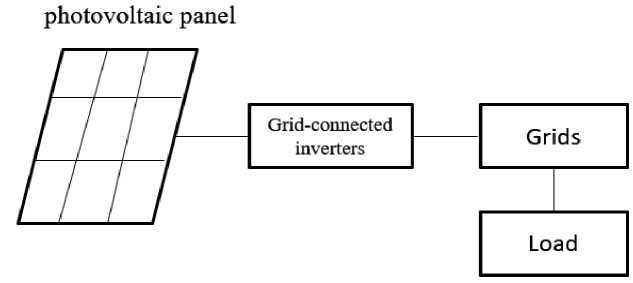
Figure 4. Grid-connected photovoltaic power generation system
According to CB/T 3852 ‘Marine Lighting Types, Parameters and Main Dimensions, ship lighting is divided into nine parts: cabin roof lights, canopy lights, floodlights, searchlights, hanging lights, portable lamps, wall lamps, table lamps, chart lights. This paper focuses on the rated voltage and rated power of fishing vessel lighting, and the following will introduce the commonly used lighting parameters such as Table 1
Table 1
ILLUMINATION PARAMETER TABLE
|
Name |
rated voltage ( V ) |
rating ( W ) |
|
Cabin top light |
220 |
100(25) |
|
Canopy top light |
220 |
25 |
|
Floodlights (tungsten halogen) |
220 |
300 |
|
Searchlights (tungsten halogen) |
220 |
100 |
|
Hanging lamps ( incandescent ) |
220 |
300 |
|
Carrying lamps (incandescent) |
220 |
40 |
|
Wall lamps (incandescent) |
24 |
/ |
|
Table lamps (fluorescent) |
110 |
60 |
|
Chart lights (retractable) |
24 |
/ |
Fishing vessel lighting systems generally require a minimum of 2 searchlights, which are rated at 220 V and 100 W. In addition to this there are cabins that require 5 hanging lights, generally rated at 200 W.
Wind and solar energy are very random, so it is difficult to control them. The situation at sea is even more complex and variable, and one can only store their energy for the required production equipment.
Wind energy at sea is mainly described in terms of wind speed, and it takes a long period of statistical data to get a pattern. The Beaufort Wind Scale divides the wind level into a total of 12 classes. Classes 0 to 6 are known as no wind, breeze, and wind, strong wind, strong wind, etc. Classes greater than 7 are tropical depressions, tropical storms, strong tropical storms, typhoons or hurricanes. Generally winds on land rarely reach force 12, while winds at sea far exceed force 12 at maximum. In the recorded sea hurricanes, the Gulf of Mexico and the Caribbean Sea along the hurricane force is the strongest, its maximum wind speed had reached 243 km / h, the instantaneous wind speed of 483 km/h. August 10, 2006, in China's Zhejiang coast landing of the eighth super typhoon ‘Sangmei’, the centre of the maximum wind speed up to 17, wind speed of 245 km/h. The wind speed is up to 12, wind speed of 245 km/h. The maximum wind speed of 245 km/h, wind speed of 245 km/h, wind speed of 245 km/h. Wind speed of 245 km/h (68 m/s). In order to study the convenience, the average wind speed of 6.5~12 m/s of China's offshore wind energy is used as a reference to establish the equation.
When the wind speed is certain, the generator's power generation depends on the generator's power. This paper takes a certain model of 800w three-blade wind turbine as an example.
Table 2
TABLE OF WIND TURBINE PARAMETERS
|
Rated Power |
Peak power |
Rated Voltage |
Rated speed |
Safe wind speed |
Impeller diameter |
Number of blades |
Starting wind speed |
Main machine weight |
|
800W |
810W |
48V |
12M/S |
40M/S |
1.75M |
3 |
2.5M/S |
11.5KG |
Commonly used wind turbine power formulas are listed below:
P= 2 P^R^V3
Where ρ – is the air density (kg/m³); η – is the generator efficiency; R – is the radius of the wind blade (m); V is the unit of velocity (m/s). On a fishing boat when the wind speed is 12m/s, bring in the impeller diameter of 1.75 m, the number of blades 3, can get the rated power of 800 W, rated voltage 48 V.
Weather conditions at sea are variable, and solar power is mainly generated from sunny days, varying with the intensity of the light. It is strongest in the summer of the year, strongest at midday during the day, and stronger near the equator.
When the light intensity is certain, the solar power generation power depends on the area of the solar panel, the material and so on. In this paper, a 100w PVM-100 solar panel is used as an example to illustrate the power generated by the solar panel, as shown in Table 3.
Table 3.
PARAMETER LIST OF SOLAR PANELS
|
Moel No. |
Peak Power |
Cell |
Power Difference |
Peak Voltage |
Peak Current |
Open Circuit Voltage |
Short Circuit Current |
Dimension |
|
PVM- 100 |
100 W |
36 pcs 125x125 mm |
±3% |
18.17 v |
5.5 A |
21.6 V |
6.11 A |
770x671x25 mm |
The formula for solar panel power generation is:
Average sunshine hours x solar panel wattage x 75% = watt-hours per day
For a fishing boat lighting system, 0.5167 m2 is elected, which gives a peak value of 100 W and a peak voltage of 18 V.
Based on force control wind and solar complementary fishing vessel lighting system design. In this project, the fishing boat lighting system is selected to take the average wind speed and solar light intensity at sea in China as the actual operation background, and the 800w wind turbine and 10 pieces of 100 w solar panels as the object, to carry out simulation research for different situations using the configuration software and to verify the feasibility of the wind and solar complementary fishing boat lighting.
When the wind speed is 7 m/s, according to the wind turbine impeller speed versus wind speed equation:
MrR
Л = — v where Л - is the blade tip speed ratio; R - is the maximum rotational radius of the wind turbine, or the tip radius (m); шг-is the wind wheel angular velocity (rad/s); And v-is the wind speed.
For the determined form of the wind turbine, its tip speed ratio λ is determined. The impeller speed is calculated to be 182 rad/s according to the 800w relevant data given by the merchant. Its simulation circuit diagram is shown in Figure 5:
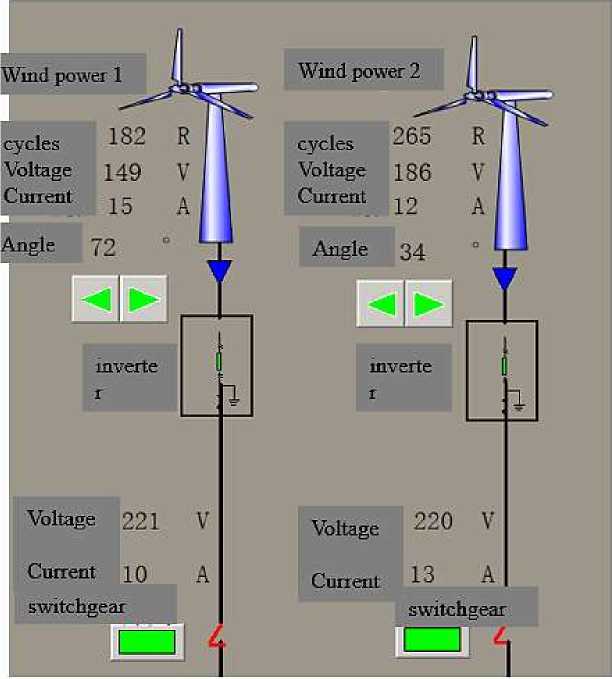
Figure 5. Wind turbine simulation
Enter 182 in the RPM parameter of the configuration ‘Wind Turbine’ and define the formula in the global script:
P=-pr^R2V3
P=^3UIcosv
It can be obtained that when the wind speed is 7m/s, the output power of the wind turbine is 230 W, the AC voltage is 149V, and the output AC current is 1.5 A, and the input wind speed is 6.5-
12 m/s in turn, which can be obtained by the curve relationship between its output power and the wind speed as shown in Figure 6.

Air velocity ( N/S )
Figure 6. Plot of output power vs. wind speed
Solar power generation control systems are generally formed by solar cells, controllers, inverters and battery packs together; while solar DC power generation control systems do not contain inverters. In order for the solar power generation system to supply sufficient power to the load, it is necessary to select various components reasonably according to the output power of the electronic equipment used. When a 100W solar panel is selected, the simulation circuit diagram is shown in Figure 7.
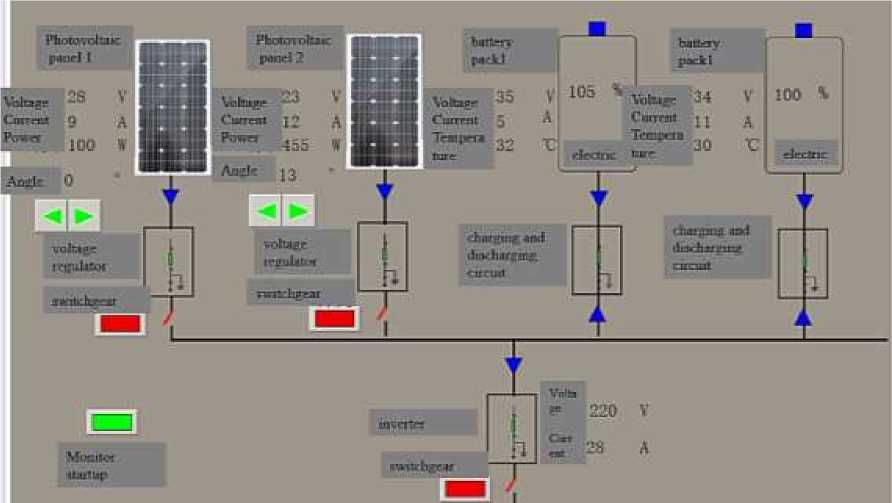
Figure 7. Simulation circuit diagram
The following will be an example of 100W output power, six hours of use per day, and explains the following calculation method:
-
1. First of all, the number of watt-hours consumed in a day (including the power consumption of the inverter) should be accounted for: if the conversion efficiency of the inverter is 90%, and the output power is 100W, the actual output power is 100W/90% = 111W; and if it works for five hours a day, the power consumption is 111W*5 hours = 555Wh.
-
2. Measurement of solar panels: according to a reasonable sunshine duration of about six hours a day, and taking into account the effect of full and in the full process of consumption, the actual output power of solar panels is about 555Wh/6h/70%=130W, of which more than seventy per cent is in the charging process, the actual use of solar panels of the power.
Design Calculation of Lighting Loads on Fishing Vessels. According to the previous specification for ship lighting appliances, the rated voltage is basically 220 V, but the rated power is both large and small. With the change of illumination and different needs, the power also changes.
The following fishing boat rated voltage of 220 V, rated power of 200 W hanging lamp as an example, to introduce the calculation method:
If 5 groups of hanging lamps connected in parallel in the same indoor circuit its simulation circuit diagram shown in Figure 8.
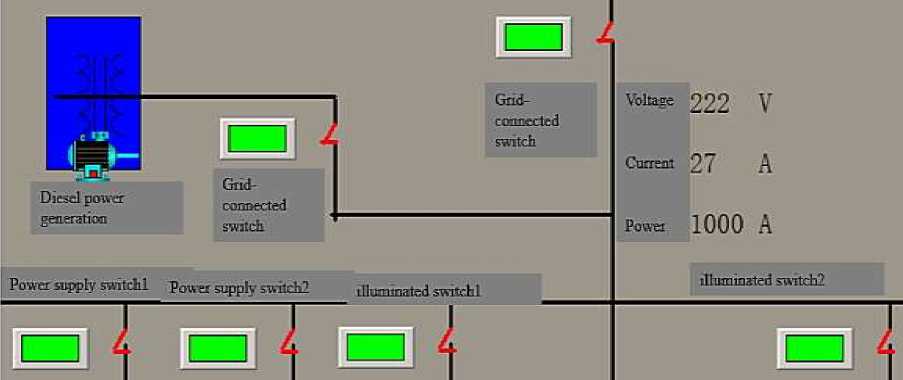
Figure 8. Lighting simulation circuit diagram
A simplified circuit analysis of this can be obtained:
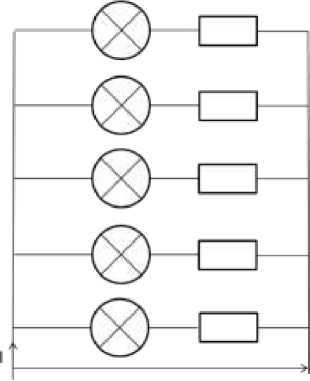
и
The port voltage U can be calculated as 220V and the port current as I= — x 5 =4.55A, the port power can be obtained as 1000 W. The simulation is built and run based on the data given earlier such as wind speed, wind turbine parameters and solar parameters to get the results as shown in Figures 9 and 10. The simulation results show the output voltage current and photovoltaic power of wind power generation. Figure 9 shows the output voltage of the wind power generation and the voltage of the battery grid-connected, in general the output voltage of the wind power generation shows a sinusoidal function with a peak value of about 230 V; while the output voltage of the photovoltaic power generation shows a nonlinear, it is relatively low to maintain at about 30 V; the voltage of the battery is relatively smooth to maintain at about 30V; but finally the total grid-connected voltage is about 220 V, which is consistent with the overall design requirements.
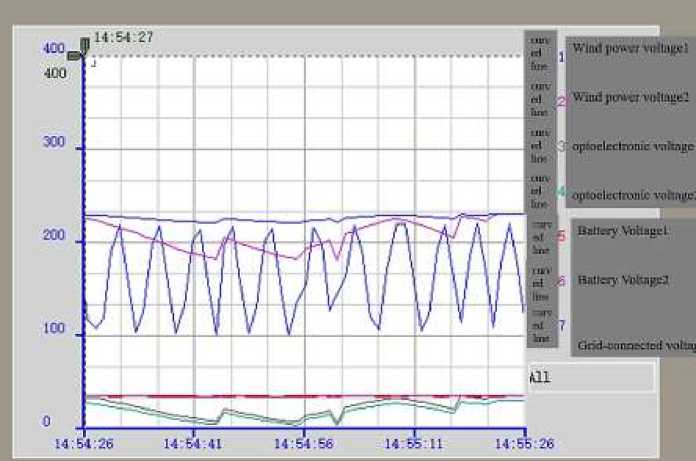
Figure 9. Scenery output voltage
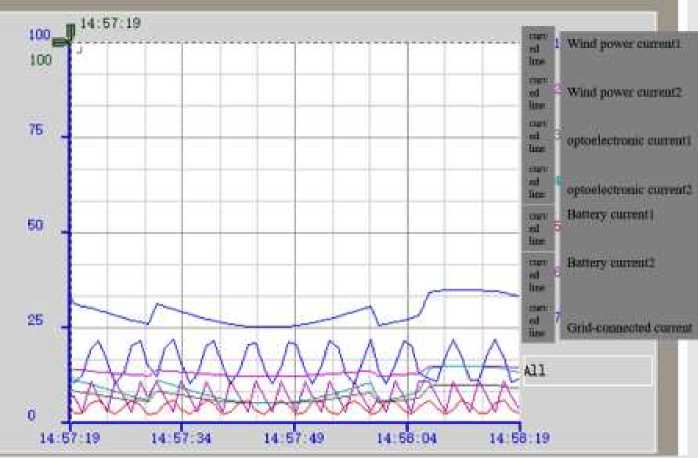
Figure 10. Scenery output current
Figure 10 shows the output current of the wind power generation and the battery grid-connected current; overall the current is almost always presented as a sinusoidal function. The output current of wind power generation peaks at about 23 A; the output current of photovoltaic power generation is relatively low at about 15 A; the current of the battery is relatively smooth, maintained at about 5 A; but the total grid-connected current is about 25 A, which meets the overall design requirements.
Analysis: In this system, the main thing is to ensure its overall operating characteristics. First of all, because in operation, the whole system must be balanced internally, so if the system has both the complementary function and the balancing function, it can realise the unified command and responsibility allocation for the internal work of the whole system, so that the whole system can reach the steady state and balanced operation state as far as possible, the system in this paper accordingly re-designed and representative, not only can reduce the maintenance cost of the whole system, but also can make its overall operation characteristics. At the same time can also make its overall operational stability, life cycle greatly increased. At the same time, the system can be visualised, and there can be multiple windows to collect and display all the data, which can be provided to the engineering designers for analysis, and help the engineers to understand the real operating conditions and characteristics of the system.
Through the simulation results and big data analysis can be seen:The biggest advantage of force control configuration is that it can play a role for the control system. Here, subject to the conditions, only the wind, photovoltaic power generation system part of the design. From the above you can see that the data are obtained from the simulation programme, just from the design point of view has reached the design requirements, but the actual data have to be verified. This shows that the simulation design is reasonable and can guarantee the data transmission.
Conclusion
On the basis of studying data from various academic researches and thesis data, the author summarises and applies relevant theoretical knowledge to make the system performance setting of this paper more complete and effective. Make it meet the specific requirements of practical operation. This paper takes the wind and light complementary ship lighting system applied to small ships as the research object, analyses the prospects of domestic and foreign ships such as clean energy, elaborates on the feasibility of the application, and carries out simulation design according to the design requirements after obtaining each parameter of the system. The following are some relevant conclusions at the completion of the design:
-
(1) The rated voltage and rated power required by the lamps used in the lighting system on the ship are different, so some simplification is made in the process of analysis, but the actual rated voltage and rated power will have a certain deviation, and if the deviation is large, it may affect the use, so in the process of designing, we should try our best to satisfy the rated parameters of the lamps of a larger number of ships.
-
(2) The output power of the wind turbine is relatively complex, and the wind speed encountered during the navigation of the ship is much larger than the range of changes in the simulation process. Therefore, in the design process should be aimed at different wind speeds and wind energy changes to meet the wind turbine output power to meet the requirements.
-
(3) The output power of photovoltaic solar panels is also based on a certain simplification, the design process ignores the impact of the efficiency of the conversion of light energy into electricity and the impact of the actual area of the solar panel on power generation. The area of the photovoltaic panels is limited, which means that the efficiency of photovoltaic power generation will be greatly affected if the actual conversion efficiency is not taken into account.
-
(4) The wind and solar hybrid systems are based on the use of battery charge/discharge controllers and inverters, and the design process does not take into account the impact of long battery charging and discharging times on the battery's life and efficiency.
After reading a lot of related materials, the author finally completed the research of this paper. However, due to the content and time constraints, there are still many technical principles have not been studied in depth, in reality there are still many shortcomings. In this regard, it is hoped that subsequent researchers will study the above problems, which are of great practical significance.
Список литературы Design of fishing vessel lighting system based on force-controlled wind-solar complementarity
- Tsyao Khun'yu i Yan Tszeyu (2010). Proektirovanie sistemy monitoringa ballastnoi vody sudna. China Navigation, 33(2), 23-26.
- Yan Tszyukhuai, Tan In'chao i Di Lemen (2018). Proektirovanie korabel'noi mikroseti na osnove dopolnitel'nykh tekhnologii vetrovoi i solnechnoi energii. Vodnyi transport Kitaya: vtoraya polovina mesyatsa, 18(3), 80-82.
- Lu Tszyan'fei (2017 g.) Issledovanie i razrabotka gibridnoi vetro-solnechnoi sistemy monitoringa ulichnogo osveshcheniya (magisterskaya dissertatsiya, Yuzhno-Kitaiskii tekhnologicheskii universitet).
- Cui, Huixi (2017): Research on monitoring system of wind-solar complementary power generation. Tangshan:North China University of Technology, 9.
- Fu, Yijie, Sun, Yanwu, & Wei, Liming (2022). Research and application of wind and solar complementary power generation system on street light. Daily Electric Appliances, (03), 52-56.
- Sun, Xiaoming (2010). Optimisation of wind-diesel hybrid power generation system for small ships. Dalian: Dalian Maritime University, 7.
- Liu, Xiaoyan (2009). Research on EAST fast control power monitoring system based on power control V6.0. Anhui:Anhui University of Technology, 46.
- E Lei (2008). Sistema monitoringa pressy na osnove programmnogo obespecheniya dlya upravleniya usiliem (Doktorskaya dissertatsiya, Nan'nin: Shkola elektrotekhniki, Universitet Guansi).
- Li Tsziyu i Lyu Guanchzhuan (2022). Proektirovanie gibridnoi sistemy proizvodstva vetrovoi i solnechnoi energii na osnove PLK-upravleniya. https://doi.org/10.14016/j.cnki.1001-9227.2022.03.101
- Fan, C. G. (2022). Design of efficient portable wind-solar complementary power supply system. Automation Technology and Application, 41(03), 35-38.
- Chzhan Khuavu i Khu Ikhuai (2020). Primenenie i perspektivy tekhnologii proizvodstva vetrovoi energii na sudakh. https://doi.org/10.13788/j.cnki.cbgc.2020.08.01
- Lu Yue, Kong Riyuan', Du Yungan i Khan Yan'tin (2020). Vybor vetryanykh turbin dlya gibridnykh sistem proizvodstva energii iz vetra i solntsa dlya malykh i srednikh sudov, Energosberezhenie na transporte i zashchita okruzhayushchei sredy, 16 (3), 32-35.
- Stanley, A. P., & King, J. (2022). Optimizing the physical design and layout of a resilient wind, solar, and storage hybrid power plant. Applied Energy, 317, 119139. https://doi.org/10.1016/j.apenergy.2022.119139
- Zhang, Y., Cheng, C., Cai, H., Jin, X., Jia, Z., Wu, X., ... & Yang, T. (2022). Long-term stochastic model predictive control and efficiency assessment for hydro-wind-solar renewable energy supply system. Applied Energy, 316, 119134. https://doi.org/10.1016/j.apenergy.2022.119134
- Han, K., Yang, K., & Yin, L. (2022). Lightweight actor-critic generative adversarial networks for real-time smart generation control of microgrids. Applied Energy, 317, 119163. https://doi.org/10.1016/j.apenergy.2022.119163

